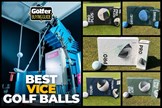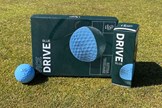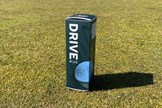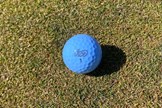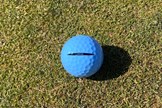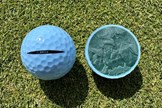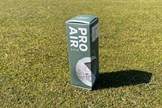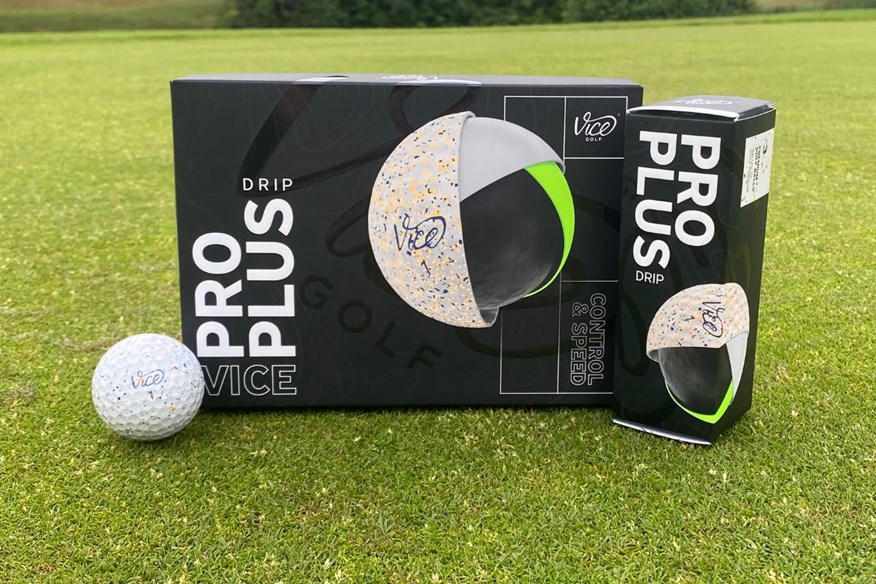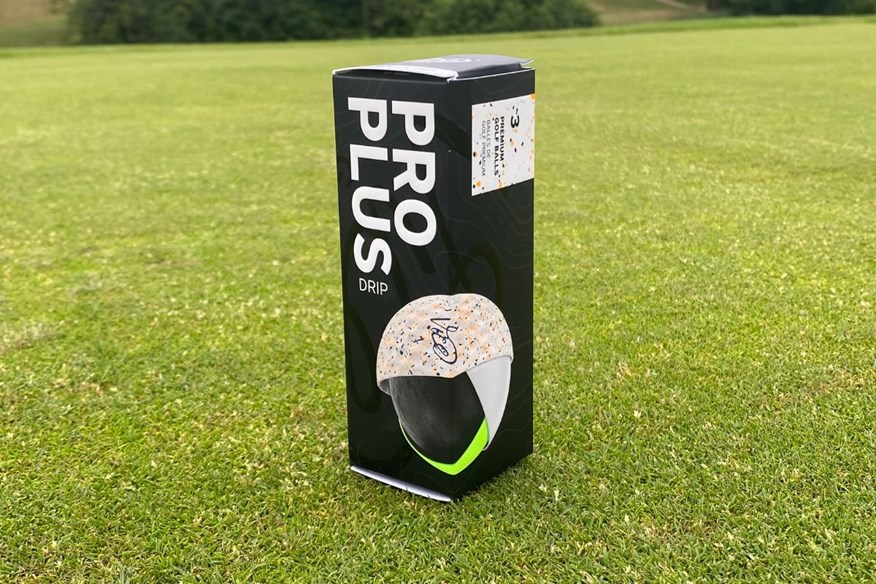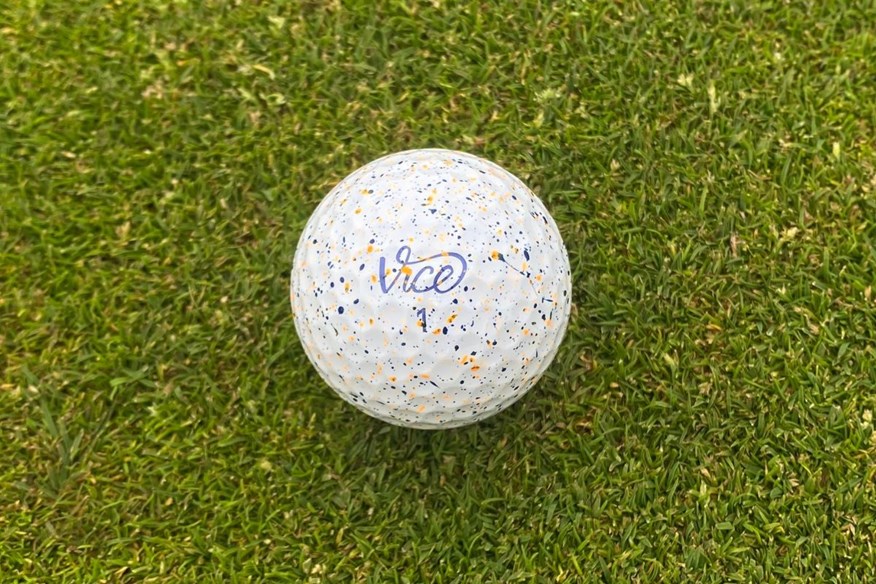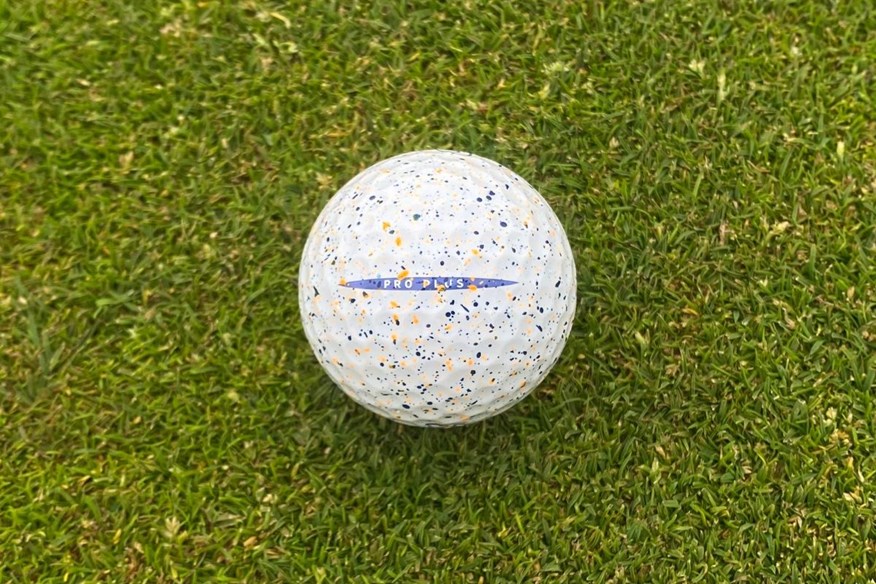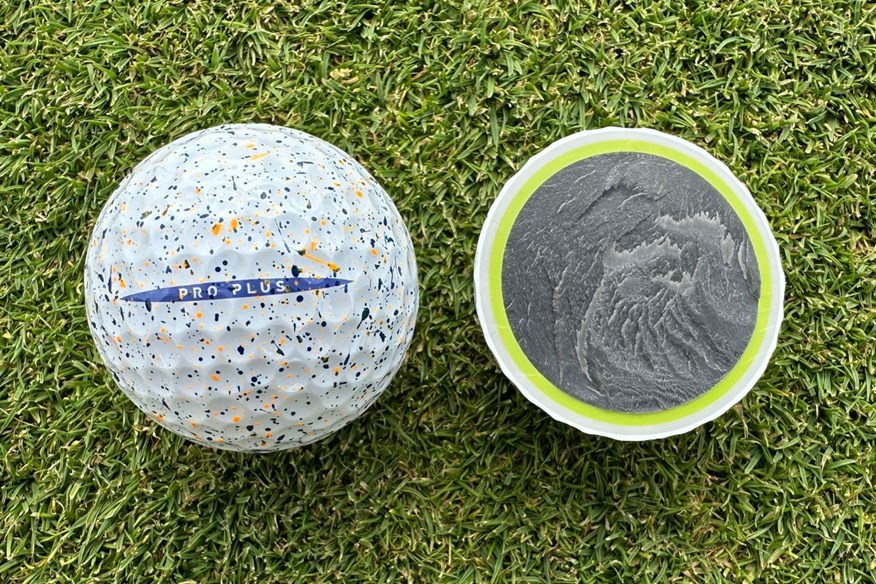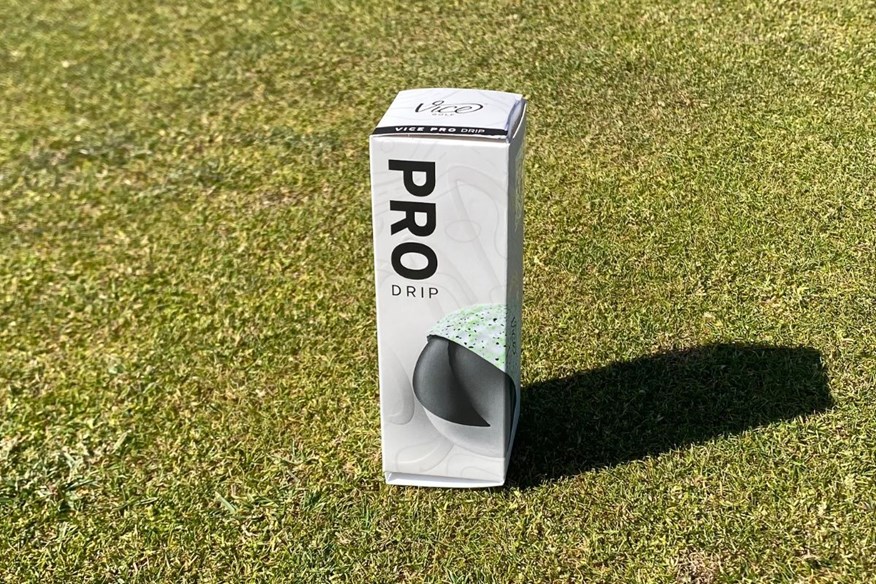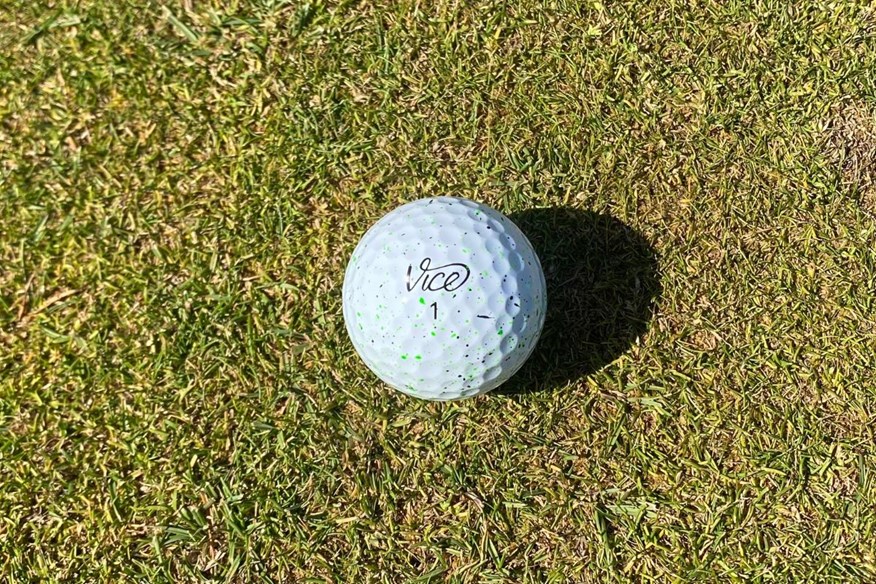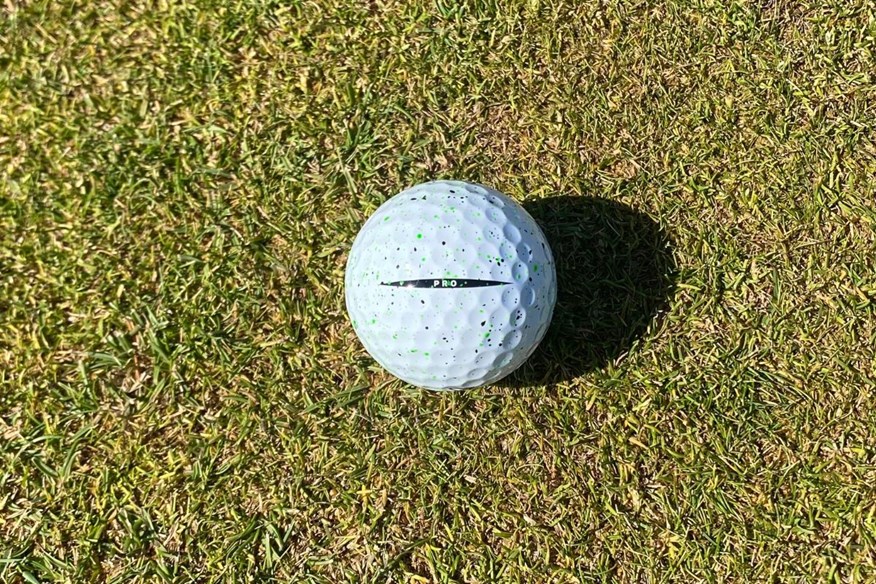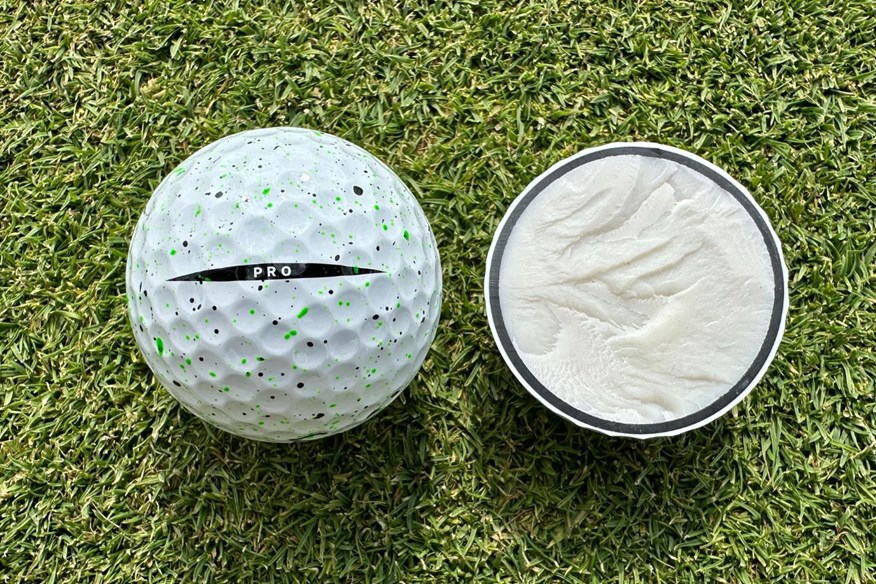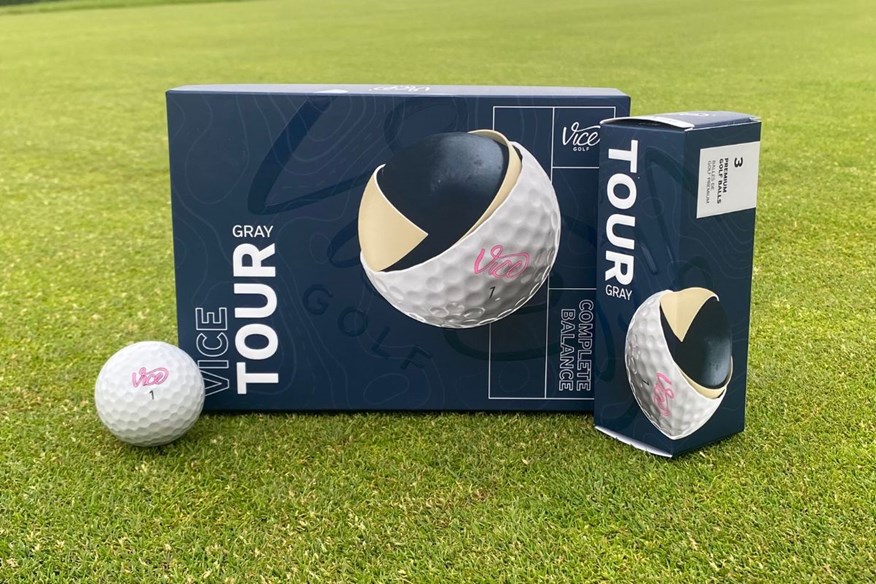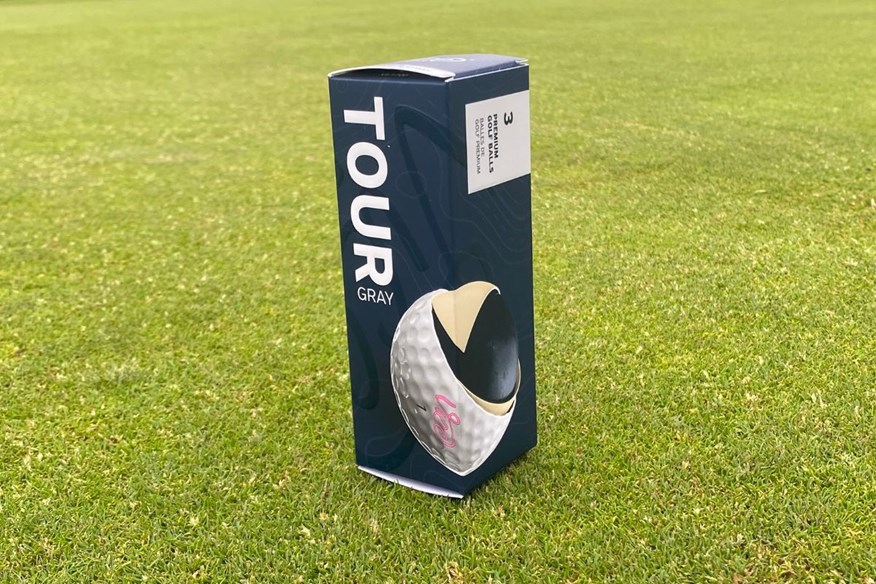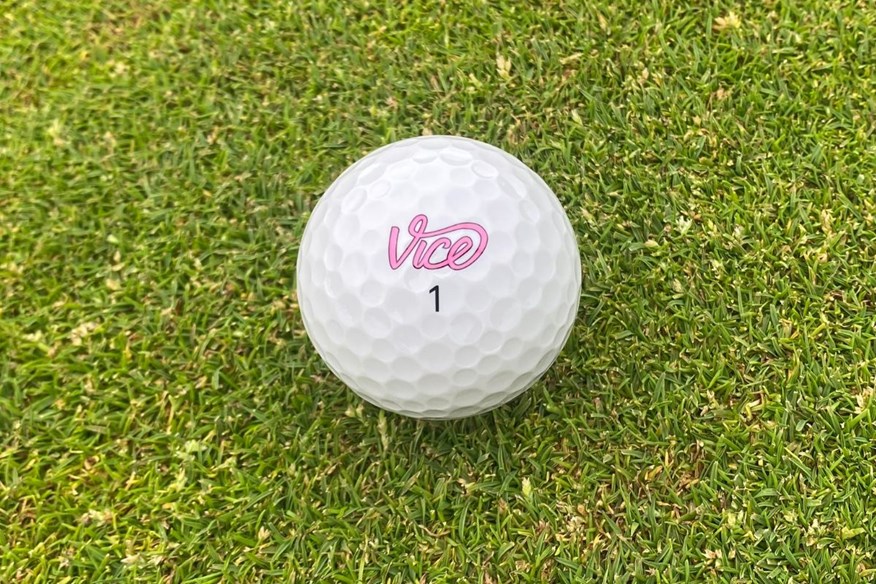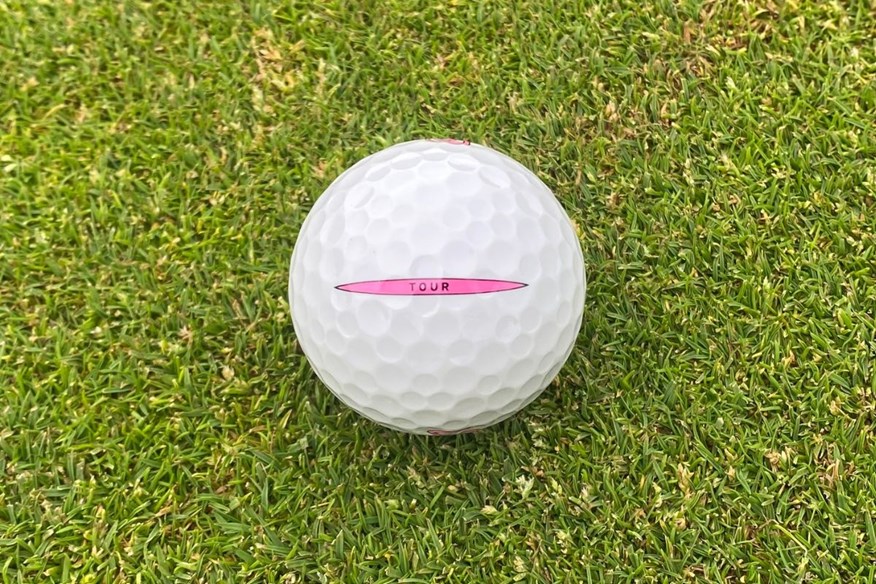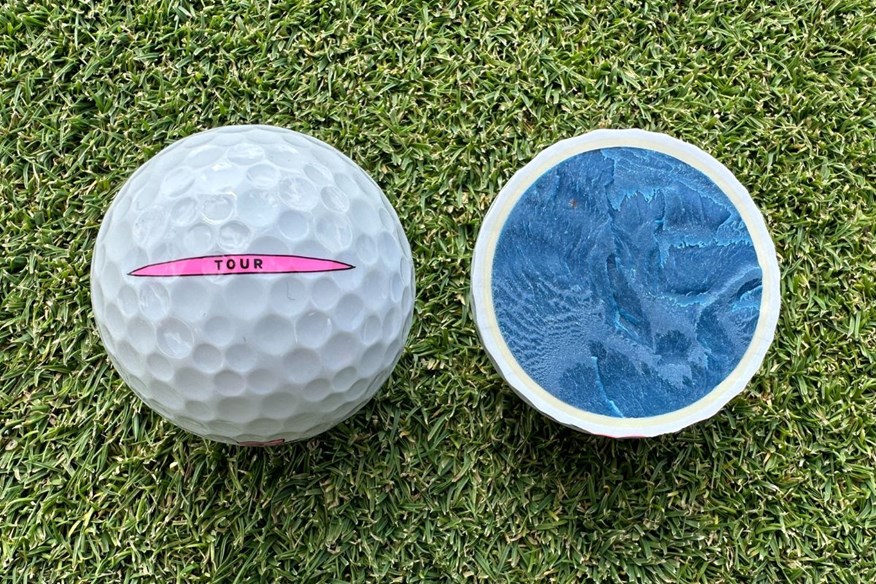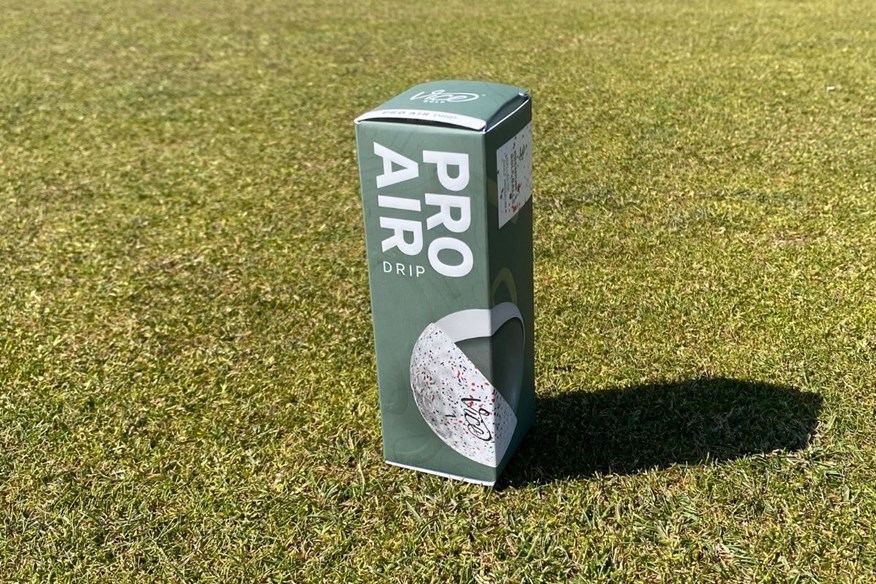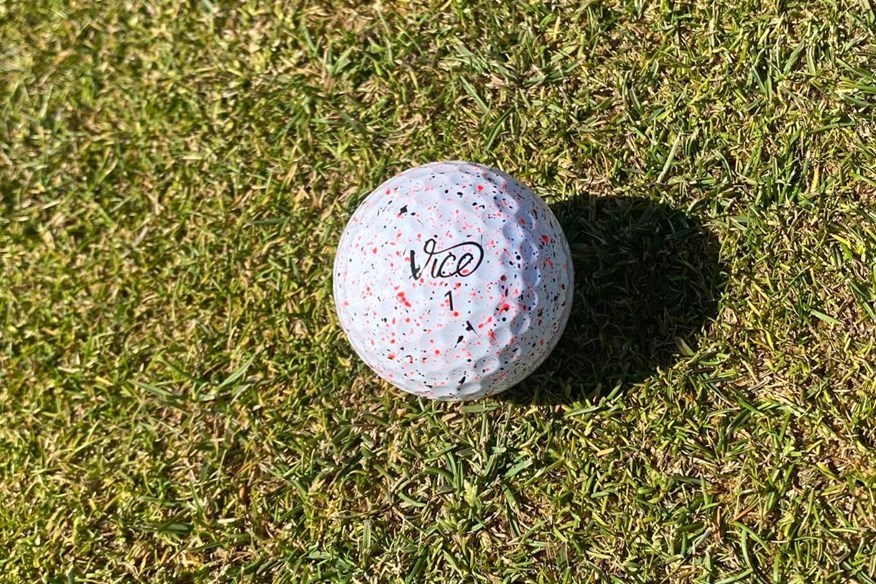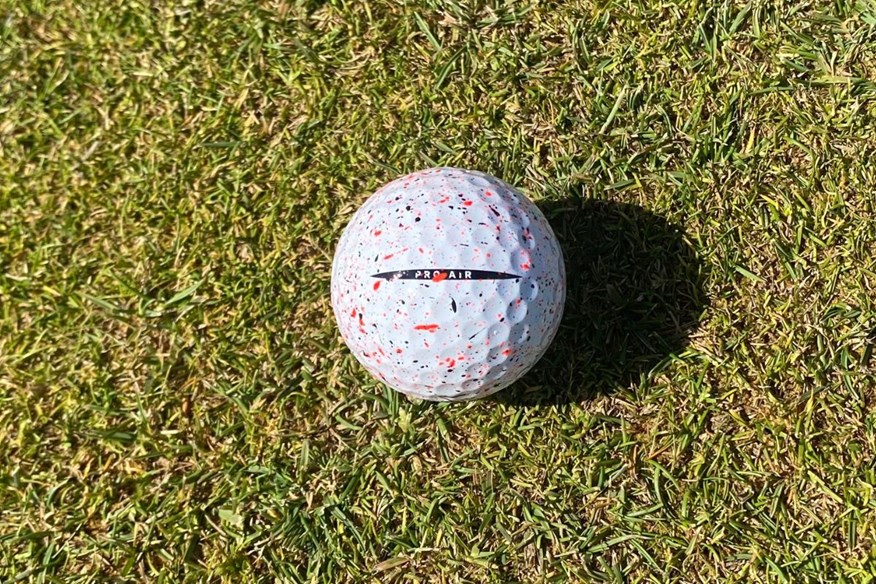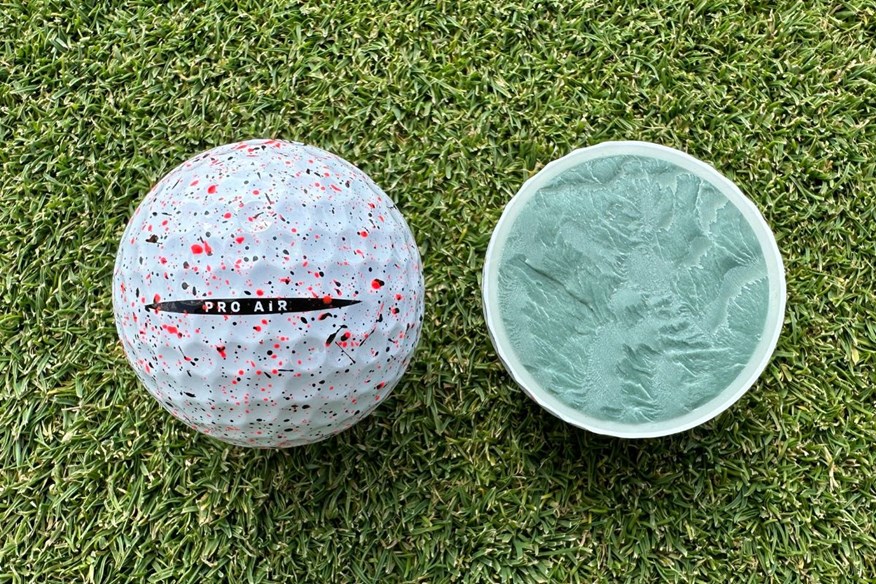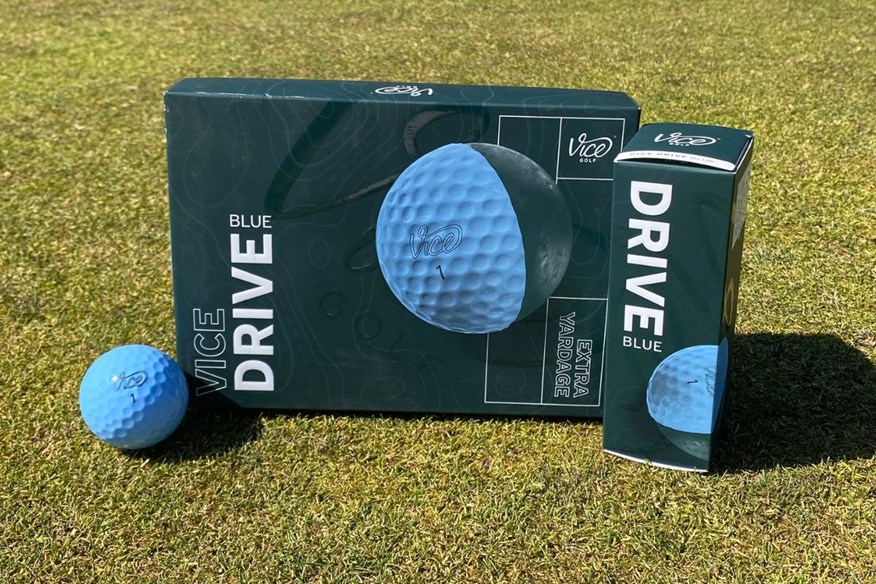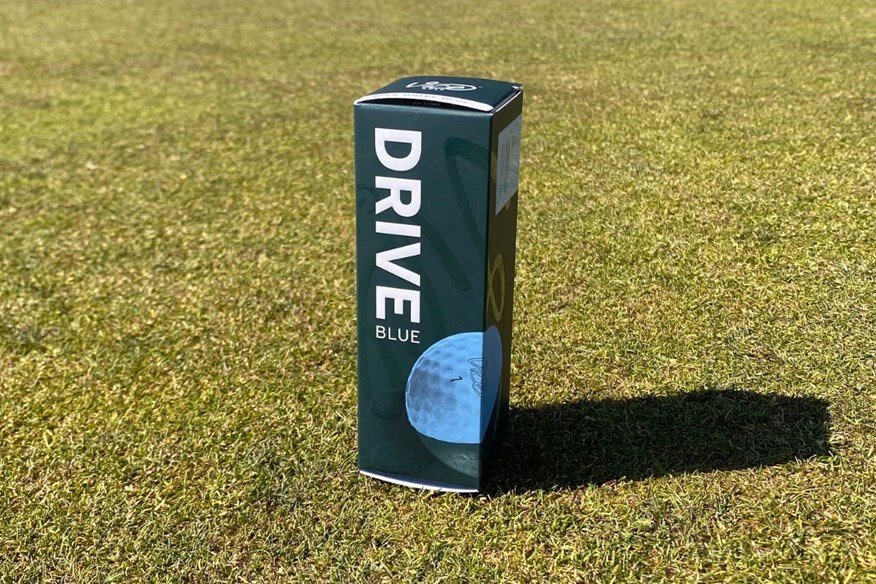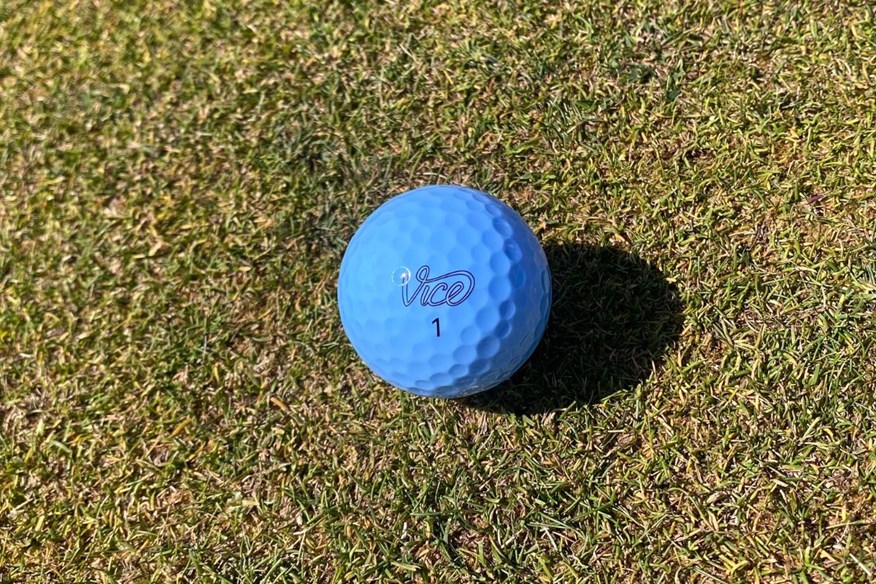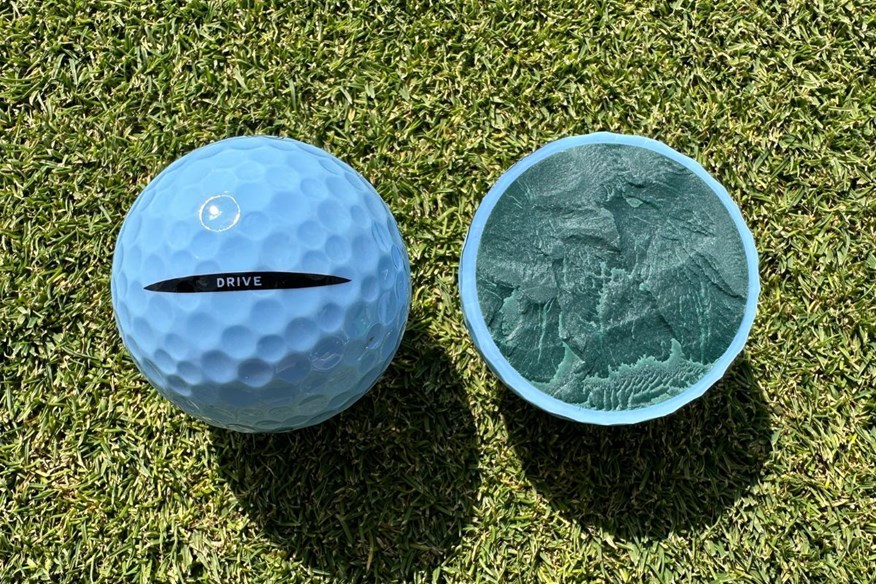Best Vice golf balls 2025: All models by the leading DTC golf ball brand robot tested
Last updated:
Click here to find out how we conducted our 2025 golf balls test
To help you find the best golf ball in 2025, we’ve carried out our biggest ever robot test, which included all five Vice golf balls. We’ve also tested every model on-course to provide you with as much information to assist you in finding the right ball for your game.
Jump to:
Vice are the leading direct-to-consumer (DTC) golf ball brand. Since being founded in 2012, Vice have grown from strength to strength, and they are renowned for offering some of the game’s best golf balls.
You won’t find your favorite Tour player using a Vice golf ball, but that doesn’t mean they don’t have models capable of challenging the best premium, four-piece, and three-piece golf balls.
Given how strong Vice’s line-up of golf balls is, I’m here to help you find the right model for your game. To assist you in your search for the right golf ball, we carried out our biggest ever golf ball robot test – 62 models from 13 manufacturers – including all five models offered by Vice. As well as testing on the robot, every golf ball has been tested on-course to provide you with a personal verdict. Click the links below to see how we completed this year’s robot test and to find out exactly how we test golf equipment.
- 2025 golf ball robot test: 62 golf balls, 2,232 shots, 50,000 data points… find out what’s No.1 for you
- How we test golf equipment at Today’s Golfer
Best Vice golf balls 2025: At a glance
The majority of Vice’s golf balls can be considered to be among the best value golf balls. Being a DTC brand, Vice are able to offer their golf balls at a very competitive price, making them hugely appealing to all golfers.
Read on to find out which Vice golf balls challenge the best premium, best three-piece, and most consistent models.
Best Vice golf balls 2025
Vice's fastest and longest golf ball
The Vice Pro Plus is one of four golf balls in this category that didn't receive an award, but don't let that put you off. That's largely due to its tee performance. While this is the fastest and longest Vice golf ball, it's not overly competitive against other four-piece and five-piece golf balls.
At 114mph, Pro Plus is the third-lowest performing golf ball, the lowest performing at 93mph, and the third-lowest performing at 78mph. However, for approach play and short game performance, the Pro Plus does improve.
The backspin generated by the Pro Plus with the 7-iron shot is the third-highest within this category (4,807rpm), and the descent angle is 45.1°. The Pro Plus finished just outside the podium places for approach play performance.
It's the same story for short game performance. With 6,090rpm, Pro Plus finished fourth for short game performance by one revolution.
With the Vice Pro Plus, you might not have the most competitive golf ball off the tee, but from the fairway and around the greens, you can expect a golf ball that'll spin easily and is easy to control.
On-course verdict
This is the only golf ball in Vice's Pro range I recommend. That might sound harsh, considering the Pro is one of the best three-piece Tour-level golf balls, but in my on-course experience, I've not seen enough from the Pro that would make me recommend it over the Pro Plus.
This golf ball loses absolutely zero marks for distance, and as a whole, off the tee, I really couldn’t criticise the Pro Plus (except for one thing, which I’ll come to later). My main gripe is its performance around the greens; I just don’t feel as though it spins enough compared to other X-model golf balls.
It could be down to my chipping action, but I definitely find my joy around the greens with other golf balls when it comes to spin and control. Approaching greens, I feel very much the same as I do with regards to this golf ball’s performance off the tee.
Throughout the bag, I get very little feedback from any strike, whether it be good or bad. I distinctly remember hitting a really good tee shot on the 8th hole on the Ailsa Course at Turnberry and saying that it felt “dead”. When you really nail a drive, you want to be saying “that felt amazing,” but it left me feeling underwhelmed.
On the putting green, I feel as though there are more responsive golf balls than the Pro Plus, but you can’t argue with the roll, because it’s solid.
Ultimately, my overarching opinion on the feel and response of the Pro Plus is – as I’ve already mentioned – underwhelming.
Read our full Vice Pro Plus golf ball review.
Pros
- Solid performance from tee to green
- Brilliant value for a premium product
- A versatile model that works for ranging swing speeds
Cons
- A slightly muted feeling and limited feedback
| Carry distance (yds) | Driver 114mph - 271.9 | Driver 93mph - 208.2 | Driver 78mph - 160.5 | 7-iron - 155.2 |
| Ball speed (mph) | Driver 114mph - 163.6 | Driver 93mph - 133.7 | Driver 78mph - 114.3 | 7-iron - 112.9 |
| Backspin (rpm) | Driver 114mph - 2,780 | Driver 93mph - 2,848 | Driver 78mph - 2,643 | 7-iron - 4,807 | Pitch - 6,090 |
| Launch angle (°) | Driver 114mph - 10.9 | Driver 93mph - 12.7 | Driver 78mph - 13.7 | 7-iron - 20.8 | Pitch - 30.3 |
| Descent angle (°) | Driver 114mph - 37.4 | Driver 93mph - 33 | Driver 78mph - 27.8 | 7-iron - 45.1 | Pitch - 35.4 |
| Peak height (yds) | Driver 114mph - 32.2 | Driver 93mph - 22.8 | Driver 78mph - 15.6 | 7-iron - 29.4 | Pitch - 6.6 |
| Compression (psi) | 116 |
- Ultra thin cast urethane cover
- Versatile magnesium ionomer outer mantle
- Surlyn grade inner mantle
- Lightweight speed core
- 336 dimples
- 4-Piece construction
- Available in white and lime
- Alternative models include Drip, Shade, and Tracer
Vice's middle-of-the-road Pro series golf ball
The Vice Pro is said to sit between the Pro Plus and Pro Air in Vice's Pro range. That's exactly where the Pro sits for short game performance with 5,708rpm.
With approach play, you can expect a super consistent golf ball that you can trust to carry a similar distance shot after shot because it ranked first for carry distance consistency out of all 62 golf balls. For backspin and descent angle, the Pro is directly between the Pro Plus and Pro Air, with 4,452rpm and a 44.9° descent angle.
The same pattern appears in driving performance. The Pro is the longest golf ball of the Pro series at 93mph and 78mph, but it's in the middle of the pack when it comes to spin. However, at 114mph, it's the highest-spinning, and it's then shorter than the Pro Plus, but still longer than the Pro Air.
The Pro delivers very consistent carry numbers in approach play performance, which means it's a ball you can trust to travel a similar distance. The Pro is an inferior golf ball to the Pro Plus if you have a quick swing speed, but it's a much closer match-up at 93mph and 78mph.
Considering the Pro is Vice's challenger to the Titleist Pro V1, it's well worth giving it a go because it's nearly half the price. However, for the same price, I would suggest opting for the Pro Plus instead.
On-course verdict
I genuinely believe that Vice have missed the mark with the Vice Pro. I don’t see it offering anything more or different from the Pro Plus.
I would say that the Vice Pro performed best for me off an iron – specifically longer irons - because I knew my shot would carry and roll.
I didn’t really enjoy the feel and response of the Vice Pro, but I get that this is completely subjective! For me, there wasn’t a lot of feedback.
Between the Vice Pro Plus and Vice Tour, I think every golfer has a solid option without having to consider the Vice Pro.
Read our full Vice Pro golf ball review.
Pros
- Great value for money
- Competitive distance at varying swing speeds
- Consistent carry distance
Cons
- Limited feedback from every shot
| Carry distance (yds) | Driver 114mph - 269.8 | Driver 93mph - 208.6 | Driver 78mph - 160.7 | 7-iron - 156.9 |
| Ball speed (mph) | Driver 114mph - 163.1 | Driver 93mph - 133.6 | Driver 78mph - 113.1 | 7-iron - 108.8 |
| Backspin (rpm) | Driver 114mph - 2,829 | Driver 93mph - 2,759 | Driver 78mph - 2,499 | 7-iron - 4,452 | Pitch - 5,708 |
| Launch angle (°) | Driver 114mph - 10.8 | Driver 93mph - 12.9 | Driver 78mph - 13.8 | 7-iron - 21.3 | Pitch - 30.9 |
| Descent angle (°) | Driver 114mph - 37.4 | Driver 93mph - 32.8 | Driver 78mph - 27.3 | 7-iron - 44.9 | Pitch - 36.4 |
| Peak height (yds) | Driver 114mph - 31.9 | Driver 93mph - 22.8 | Driver 78mph - 15.4 | 7-iron - 29.6 | Pitch - 7 |
| Compression (psi) | 106 |
- Ultra-thin cast urethane cover
- Surlyn grade mantle
- Size-optimised High Energy Speed Core (HESC)
- 318 dimples
- 3-Piece construction
- Available in white and lime
- Alternative models include Drip, Shade, and Tracer
No.1 3-piece club golfer model
This is one of my most highly anticipated golf balls of the entire test. Ever since I tested the Vice Tour on-course, I've been waiting to see how it would perform in our robot test. I'm very pleasantly surprised.
I'm a fan of the Tour, but I never expected this golf ball would scoop up five awards in the three-piece club golfer category. As well as being the best golf ball for tee to green performance at 114mph, the Tour won the silver medal for tee to green performance at 93mph, off-the-tee performance, and short game performance, plus the bronze medal for tee to green performance at 78mph.
This golf ball is the real deal - and it doesn't have a urethane cover. That's quite possibly a reason as to why it's low-spinning when approaching greens (4,216rpm). However, around the greens, that spin shoots up, and it's the second-highest-spinning model with 5,967rpm (14th overall).
Short game and approach play performance is very clearly solid, but off the tee is where the Tour really gets you excited. At 114mph, this is the longest (271.4yds) and second-fastest (163.3mph) golf ball, at 93mph, it's the longest (208.3yds) and third-fastest (133.4mph), and at 78mph, it's the second-longest (160.8yds) and second-fastest (113.2mph).
There's a ton to like about the Vice Tour, and factoring in the price, as well as its domination, this is the best three-piece club golfer model.
On-course verdict
I would say the Vice Tour is a suitable option for a wide range of golfers because, as a whole, it’s a decent, well-rounded golf ball.
One area where the Vice Tour impresses me is with how well it propels off the face of a long iron. Distance is strong even into the wind, and there’s a more pleasant feedback from this ball than I feel from any of the golf balls in Vice’s Pro range.
I wouldn’t go as far as to say the Vice Tour is a soft-feeling golf ball or a firm-feeling golf ball. I would place it somewhere in the middle, with a medium feel.
Having played with Vice’s Pro Plus, Pro, and Pro Air golf balls, I would say that this golf ball is more responsive than all of those. The feel off the face isn’t as profound as other golf balls I’ve played with, but it definitely isn’t as muted as other Vice golf balls.
This helps to provide more feedback from your shot, which is something I like, but it isn’t something that every golfer wants. The responsiveness of the Vice Tour could be better, but for a golf ball with a Surlyn cover, it’s pretty good.
Whether you have a fast swing speed or a slow swing speed, the Vice Tour should definitely be on your radar.
Read our full Vice Tour golf ball review.
Pros
- Consistent and tight dispersion
- Impressive on-course distance
- Incredible value for money
Cons
- Not much grab on short approach shots
| Carry distance (yds) | Driver 114mph - 271.4 | Driver 93mph - 208.3 | Driver 78mph - 160.8 | 7-iron - 158.1 |
| Ball speed (mph) | Driver 114mph - 163.3 | Driver 93mph - 133.4 | Driver 78mph - 113 | 7-iron - 108.7 |
| Backspin (rpm) | Driver 114mph - 2,769 | Driver 93mph - 2,635 | Driver 78mph - 2,381 | 7-iron - 4,216 | Pitch - 5,967 |
| Launch angle (°) | Driver 114mph - 11.1 | Driver 93mph - 13 | Driver 78mph - 14 | 7-iron - 21.5 | Pitch - 30.6 |
| Descent angle (°) | Driver 114mph - 37.7 | Driver 93mph - 32.2 | Driver 78mph - 27.3 | 7-iron - 44.6 | Pitch - 35.8 |
| Peak height (yds) | Driver 114mph - 32.6 | Driver 93mph - 22.4 | Driver 78mph - 15.5 | 7-iron - 29.6 | Pitch - 6.7 |
| Compression (psi) | 112 |
- Enhanced mid-acid Surlyn cover
- High resilience and low stiffness composition
- Size-optimized High Energy Speed Core (HESC)
- 312 dimples
- 3-Piece construction
- Available in white and grey
Vice's lowest-performing Pro series golf ball
Vice say the Pro Air "addresses the lack of distance in most premium golf balls," but that's definitely not what our robot test findings show.
Not only is the Vice Pro Air the shortest and slowest Pro series golf ball, but it's also the shortest and slowest Vice golf ball - and that's at all three driver swing speeds.
With approach play performance, it's slightly more positive. Vice say this is the lowest-spinning Pro golf ball of the three, and it is in this area (4,365rpm), but that's not as low-spinning as the Vice Tour (4,216), and it's less than 100rpm lower-spinning than the Pro.
With regard to short game performance, the Pro Air is Vice's lowest-spinning golf ball (5,371rpm). You would at least expect a three-piece "Pro" golf ball to spin higher than the two-piece Vice Drive.
If you want a three-piece golf ball, I'd suggest the Vice Tour instead because it's higher-performing and cheaper. But if you want a Pro series model, go for the Pro Plus, which is again higher-performing and the same price.
On-course verdict
Before introducing the Pro Air, Vice offered the Pro Soft. The German company says this ball feels better than the Pro Soft, but I beg to differ. I was much more of a fan of the Pro Soft than I am of the Pro Air.
For me, the Pro Air is lacking more in response than it is feel. Like many of the other Vice golf balls I’ve tested, I just don’t get anything back from them.
I thought the durability of the Pro Air would be worse than the Pro Plus and Pro, but it was just as durable. Signs of wear appeared after playing a few holes with this golf ball, but that’s to be expected.
I wouldn’t go as far as to say that getting from tee to green with the Pro Air was a chore, but it definitely wasn’t enjoyable, and it was more difficult to hit and hold a green with this ball than any of the other Vice golf balls.
Read our full Vice Pro Air golf ball review.
Pros
- Soft feel
- Plenty of colors and patterns to choose from
Cons
- Not a lot of feedback
- Not as good value as the Vice Pro Plus or Pro
| Carry distance (yds) | Driver 114mph - 267.4 | Driver 93mph - 206.9 | Driver 78mph - 160.3 | 7-iron - 157 |
| Ball speed (mph) | Driver 114mph - 161.5 | Driver 93mph - 132.7 | Driver 78mph - 112.8 | 7-iron - 108.6 |
| Backspin (rpm) | Driver 114mph - 2,704 | Driver 93mph - 2,668 | Driver 78mph - 2,456 | 7-iron - 4,365 | Pitch - 5,371 |
| Launch angle (°) | Driver 114mph - 11 | Driver 93mph - 13 | Driver 78mph - 13.9 | 7-iron - 21.3 | Pitch - 31.8 |
| Descent angle (°) | Driver 114mph - 36.5 | Driver 93mph - 32.2 | Driver 78mph - 27.3 | 7-iron - 44.7 | Pitch - 37.7 |
| Peak height (yds) | Driver 114mph - 31 | Driver 93mph - 22.3 | Driver 78mph - 15.4 | 7-iron - 29.4 | Pitch - 7.5 |
| Compression (psi) | 87 |
- Thin cast urethane cover
- Zinc ionomer thermoplastic DuPont Surlyn grade mantle
- Size-optimized High Energy Speed Core (HESC)
- 318 dimples
- 3-Piece construction
- Available in white, lime, and pink
- Alternative models include Drip and Tracer
Vice's cheapest golf ball
The only two-piece golf ball Vice offers in the Drive but it performs very closely to the three-piece Pro Air.
The Drive is a stronger golf ball off the tee than the Pro Air, delivering more carry distance and ball speed at all three driver swing speeds. In short game performance, the two-piece Drive generates more spin than the Pro Air (5,492rpm vs. 5,371rpm).
Tee to green and approach play performance isn't as strong as the Pro Air's, but I don't think it's enough to make the Pro Air more enticing.
The Drive is worth its money, but the Vice Tour is definitely the best value Vice golf ball.
On-course verdict
I'm quite the fan of the Vice Drive. I had a lot of enjoyment playing with this golf ball because, from a two-piece, Surlyn model, I didn't expect as much performance.
The main area of performance I look for in a golf ball is short game. The Drive generates high levels of spin and control.
For the price, the Drive is a brilliant ball. It might not deliver amazing distance off the tee, but that's not really what I look for.
Durability is a strong attribute of the Drive, and I think it feels great, too. You won't spot this golf ball on Tour, but as a budget-friendly model, this two-piece ball is well worth considering.
Pros
- Good short game spin and control
- Great price
- Durable cover
Cons
- Not the longest off the tee
| Carry distance (yds) | Driver 114mph - 268.5 | Driver 93mph - 207.7 | Driver 78mph - 160.4 | 7-iron - 158.1 |
| Ball speed (mph) | Driver 114mph - 162| Driver 93mph - 132.9 | Driver 78mph - 113 | 7-iron - 109 |
| Backspin (rpm) | Driver 114mph - 2,685 | Driver 93mph - 2,545 | Driver 78mph - 2,231 | 7-iron - 4,319 | Pitch - 5,492 |
| Launch angle (°) | Driver 114mph - 11 | Driver 93mph - 13.2 | Driver 78mph - 14.2 | 7-iron - 21.3 | Pitch - 31.8 |
| Descent angle (°) | Driver 114mph - 36.5 | Driver 93mph - 31.8 | Driver 78mph - 26.7 | 7-iron - 44.7 | Pitch - 37.5 |
| Peak height (yds) | Driver 114mph - 31.1 | Driver 93mph - 22.2 | Driver 78mph - 15.2 | 7-iron - 29.7 | Pitch - 7.3 |
| Compression (psi) | 93 |
- Enhanced DuPont Surlyn cover
- Soft Energy Speed Core (SESC)
- 312 dimples
- 2-Piece construction
- Available in white, yellow, pink, blue
Best Vice golf balls 2025: Robot test data
| Golf ball | Vice Pro Plus | Vice Pro | Vice Tour | Vice Pro Air | Vice Drive |
| Compression | 116 | 106 | 112 | 87 | 93 |
| 114mph Driver Ball Speed (mph) | 163.8 | 163.1 | 163.3 | 161.5 | 162.0 |
| 114mph Driver Launch Angle (°) | 10.9 | 10.8 | 11.1 | 11.0 | 11.0 |
| 114mph Driver Backspin (rpm) | 2780 | 2829 | 2769 | 2704 | 2685 |
| 114mph Driver Carry Distance (yds) | 271.9 | 269.8 | 271.4 | 267.4 | 268.5 |
| 114mph Driver Height (yds) | 32.2 | 31.9 | 32.6 | 31.0 | 31.1 |
| 114mph Driver Descent Angle (°) | 37.4 | 37.4 | 37.7 | 36.5 | 36.5 |
| 93mph Driver Ball Speed (mph) | 133.7 | 133.6 | 133.4 | 132.7 | 132.9 |
| 93mph Driver Launch Angle (°) | 12.7 | 12.9 | 13.0 | 13.0 | 13.2 |
| 93mph Driver Backspin (rpm) | 2848 | 2759 | 2635 | 2668 | 2545 |
| 93mph Driver Carry Distance (yds) | 208.2 | 208.6 | 208.3 | 206.9 | 207.7 |
| 93mph Driver Height (yds) | 22.8 | 22.8 | 22.4 | 22.3 | 22.2 |
| 93mph Driver Descent Angle (°) | 33.0 | 32.8 | 32.2 | 32.2 | 31.8 |
| 78mph Driver Ball Speed (mph) | 112.9 | 113.1 | 113.0 | 112.8 | 113.0 |
| 78mph Driver Launch Angle (°) | 13.7 | 13.8 | 14.0 | 13.9 | 14.2 |
| 78mph Driver Backspin (rpm) | 2643 | 2499 | 2381 | 2456 | 2231 |
| 78mph Driver Carry Distance (yds) | 160.5 | 160.7 | 160.8 | 160.3 | 160.4 |
| 78mph Driver Height (yds) | 15.6 | 15.4 | 15.4 | 15.4 | 15.2 |
| 78mph Driver Descent Angle (°) | 27.8 | 27.3 | 27.1 | 27.3 | 26.7 |
| 7-Iron Ball Speed (mph) | 108.9 | 108.8 | 108.7 | 108.6 | 109.0 |
| 7-Iron Launch Angle (°) | 20.8 | 21.3 | 21.5 | 21.3 | 21.3 |
| 7-Iron Backspin (rpm) | 4807 | 4452 | 4216 | 4365 | 4319 |
| 7-Iron Carry Distance (yds) | 155.2 | 156.9 | 158.1 | 157.0 | 158.1 |
| 7-Iron Height (yds) | 29.4 | 29.6 | 29.6 | 29.4 | 29.7 |
| 7-Iron Descent Angle (°) | 45.1 | 44.9 | 44.6 | 44.7 | 44.7 |
| 40-Yard Pitch Ball Speed (mph) | 46.1 | 46.3 | 46.1 | 46.7 | 46.5 |
| 40-Yard Pitch Launch Angle (°) | 30.3 | 30.9 | 30.6 | 31.8 | 31.8 |
| 40-Yard Pitch Backspin (rpm) | 6090 | 5708 | 5967 | 5371 | 5492 |
| 40-Yard Pitch Carry Distance (yds) | 39.2 | 39.9 | 39.3 | 40.9 | 40.5 |
| 40-Yard Pitch Height (yds) | 6.6 | 7.0 | 6.7 | 7.5 | 7.3 |
| 40-Yard Pitch Descent Angle (°) | 35.4 | 36.4 | 35.8 | 37.7 | 37.5 |
Best Vice golf balls 2025: Buying guide
Vice produces a strong range of golf balls to accommodate the needs and wants of every golfer. The difficulty you’ll have is deciding which of their golf balls you should choose. To help you pick, I’ve put together a few considerations you should make to help you select the correct Vice golf ball for your game.
Ability
Regardless of your ability, the Vice model you’re going to benefit most from playing with is the Pro Plus. The Pro Plus is one of the best four-piece golf balls, and one of the best value golf balls. The Vice Tour is a cheaper golf ball to consider if you’re working to a tighter budget.
Better and more seasoned golfers arguably should be playing with the best balls they can afford to be playing with because it will 100 percent improve your game from tee to green. The flip side to that is, if you’re new to the game or play infrequently with your buddies, work colleagues, or whoever, then you might not have the game to warrant playing with premium golf balls for whatever reason. At that point, playing with cheap golf balls is perfectly understandable.
That being said, switching to one of the best value golf balls could help you play better golf and find more enjoyment – even if you do just play for fun – and most Vice golf balls are brilliant value for money.
Budget
Tied closely with ability is budget. Thankfully, the best Vice golf balls are very reasonably priced, and in most cases, they are cheaper than their competitors.
Players who are new to the game or don’t get out often are more likely to budget when it comes to purchasing golf balls. Whereas more frequent and skilled golfers are less likely to budget and opt for more expensive golf balls. That’s not to say every golfer meeting one of those credentials behaves this way.
While I’ve probably been alive less number of years than some of you have played golf, I’ve had the pleasure of working in the golf industry for the entirety of my working life. During that time, I’ve seen golfers of all abilities splashing the cash on the latest golf clubs in the hope of improving their game and being thrifty when it comes to spending on golf balls – I’ve been a culprit of this myself in my early golfing days!
You probably can afford to save some cash if you’re shopping in the Vice market, but with any brand, it’s not likely to be the case.
If there’s ever a piece of golf equipment you shouldn’t be frugal with, it’s golf balls!
Feel
The vast majority of golfers look for soft-feeling golf balls, which doesn’t really rule out any Vice model. Even their firmer golf balls aren’t majorly firm. Many golfers enjoy soft-feeling golf balls because they deliver a sweet sensation off of every club in the bag – except if you skull one.
I enjoy playing with firmer golf balls because I feel as though they provide more feedback and a stronger response. However, feel is completely personal, and like I say, it’s tough to find a super-firm golf ball because most are made to be soft to please the needs of more golfers.
Performance
Every Vice golf ball comes fitted with specific technology to perform in a particular manner – this is often outlined on the box. For instance, it might inform you that a certain model is designed to travel high and far off the tee with low spin but grab and spin on the greens. Another golf ball might say it produces low flight off the tee and mid-spin in the short game.
Vice offers golf balls for every golfer’s needs; whether you’re looking for a high-spinning, high-launching, soft, firm, or fast golf ball, Vice has you covered.
To save you from working out which model you think is right for you. We have the answer. We’ve carried out a mammoth robot test to help you see how well a ball stacks up to the claims made by the manufacturer.
Spin
Ideally, every golf ball would produce low-spin off the tee and high-spin in your approach game. However, not all golf balls are designed that way. The majority of golf balls are designed to produce low driver spin and generate distance off the tee, but not all golf balls are manufactured to generate high spin from irons and wedges.
Price generally correlates with short-game spin. Budget golf balls will generate less short-game spin than expensive golf balls, but there might not be much difference in your long-game spin. During a ball fitting at Titleist, I discovered that a Titleist Pro V1x and Titleist Velocity performed very similarly with my driver, but with a 7-iron, the spin dropped slightly with the Velocity, and then with a 60° wedge, the spin fell massively with the Velocity.
Spin in the golf ball comes from the combination of layers within the golf ball reacting with one another, hence why more expensive golf balls spin more in approach play because they consist of more layers and the technology is more refined. Cheaper golf balls tend to consist of two layers: the cover and core. Therefore, they don’t have the number of layers required to produce astronomical spin when attacking pins.
Another factor that helps to enhance spin is the cover material. Golf balls with a urethane cover tend to spin more (but not always) because it’s a more flexible material compared to ionomer or surlyn, which doesn’t create as much friction with the clubface as urethane does. Once again, it’s more expensive golf balls that feature urethane covers to generate higher spin on approach shots.
Spin is massively important because it can either make you hit and hold a green or hit and fly over the green. The best golf balls for spin are by far premium golf balls, closely followed by golf balls for mid-handicappers, because they feature much of the technology found in Tour-standard golf balls. If you feel as though you need high levels of spin when attacking greens, have a look at the best high-spin golf balls. Alternatively, if you feel as though spin is hurting your game, check out the best low-spin golf balls.
Distance
I would honestly say that distance is the last factor to consider when purchasing golf balls. The best way to figure out which golf balls are best for you is by working your way back from the green to the tee box. The best way of doing this is with a launch monitor to see your numbers, but if you don’t have access to one, you can do it with your eye very easily.
Start by hitting wedge shots into the green and see which balls are performing best with spin, then work your way back to 7-iron distance and look for the same numbers with slightly more of an eye on carry distance. You should have whittled it down to one or two golf balls, hit them off the tee, and look at which performs the best.
If you do it this way, I guarantee a premium golf ball will always come out on top if you’re testing one. However, if you’re doing this with cheaper golf balls, you’ll still see differences between the golf balls, and you will find one that performs well for you, or you might have the luxury of deciding between a handful.
By testing golf balls this way, you’ll end up with the ball that performs best in the short game, which is where you score. Distance is important, but there are other ways of improving distance without sacrificing spin in a golf ball.
Color
The most common golf ball color is white; however, there are plenty of other colors and designs to choose from. More vibrant colors, such as yellow, orange, or green, are all easy to pick up, and they help some people with visibility – hence why they make for the best winter golf balls.
Other ways of adding color to the golf ball can be by design, whether it be a splash of color seen on Vice golf balls or an alignment design which also helps with visibility, such as TaylorMade’s Pix golf balls or Callaway’s Triple Track golf balls.
If you’ve only ever played with white golf balls, it might be worth trying a more colorful golf ball, especially if you’re always the one asking your playing partners, “Where did that one go?”.
Alignment
More and more golf balls are being released with enhanced alignment, and even standard golf balls have a more prominent alignment stamp now than they’ve ever had. The majority of brands now offer golf balls with enhanced alignment aids. The enhanced alignment aids can be extremely useful for putting and even lining up shots on the tee. Another plus of alignment golf balls is the alignment serves as a tool for finding your golf ball either in the air or among the trees.
Best Vice golf balls 2025: FAQs
What to read next
For performance insights tailored to your swing speed and preferences, head to our results hubs:
- Best 4 and 5-piece golf balls
- Best 3-piece golf balls
- Best 2-piece golf balls
- Best golf balls for fast swing speeds
- Best golf balls for average swing speeds
- Best golf balls for slow swing speeds
- Best golf balls for distance
- Best golf balls for approach play
- Best golf balls for mid-handicaps
- Best golf balls for beginners
- Most consistent golf balls
